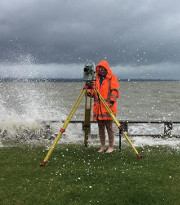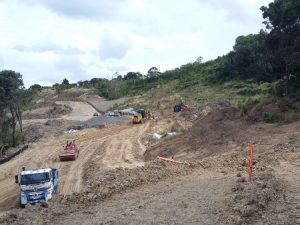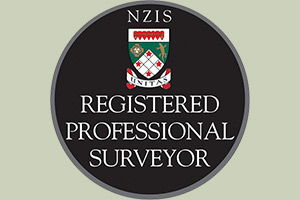Surveying | Ph +64 9 273 4182 | Online Enquiry
Surveying
Our Licensed Cadastral Surveyors are here to provide you with all the necessary surveying services. We specialise in a range of surveying services, including:
Site Survey (Topographical)
A successful design starts with accurate information, and that’s where our expert surveying services come in. We gather all essential data for a site survey, such as the position of buildings, trees, drainage systems, roads, driveways, special features, and the contours and levels of your property. We can then deliver this information in digital (CAD) format or as a paper copy to your architectural designer. Alternatively, we can use it to design a subdivision concept, complete with the necessary engineering plans to support the development.
Urban Subdivision Options
- Freehold (Fee Simple)
- Cross Lease
- Unit Title
Which Subdivision Option is Best for Your Property?
Surveying for a Freehold Subdivision (Fee Simple Subdivision)
Freehold subdivision, also known as Fee Simple Subdivision, is the most common type of subdivision. Surveying is essential in this process to ensure accuracy and compliance. The result is a separate Certificate of Title for each developed plot, with detailed surveying used to define property boundaries. The land is entirely owned by the individuals listed on the Certificate of Title.
Surveying for a Cross Lease Subdivision
Crosslease subdivisions were once widespread and still require precise surveying to manage shared ownership. Under this arrangement, the land is jointly owned in equal shares by all crosslease holders, while each owner holds the building on their portion of land. Accurate surveying is essential, as these buildings are registered on the Certificate of Title, and the associated Flats plan relies on this precision.
While Crosslease remains common, it is generally considered a less desirable form of ownership compared to Freehold. Changes to the Certificates of Title, such as modifications to buildings or the addition of new structures, require consent from all co-owners. If you are looking to convert your Crosslease property to Freehold, freeing you from these limitations, visit our Crosslease to Freehold Conversion page to learn more about the process and how we can assist with this transition.
Surveying for a Unit Title Subdivision
Unit Title subdivisions are ideal for properties that are physically connected, such as blocks of flats or commercial buildings with shared land. Thorough surveying is crucial to accurately map shared spaces and individual units. A Body Corporate (owners’ committee) is typically formed to manage the property, with all shared expenses covered by an annual levy set by the Body Corporate. Surveying plays a key role in defining the boundaries of each unit and the common areas, ensuring clarity and legal compliance. Often, a management company is hired by the Body Corporate to administer the levy and keep property owners informed, relying on precise surveying data to manage the property effectively.
Surveying required for Rural Subdivision
Just as landowners in urban areas might choose to downsize, larger rural blocks can also be subdivided, with individual certificates of title issued for the smaller parcels. We can assist you in determining the best way to maximise your subdivision in compliance with the Local Council’s regulations.
Monumentation Survey or Boundary Reinstatement Survey and Cadastral Survey Datasets (CSD) Preparation
This type of surveying is governed by the Cadastral Survey Act 2002 and must be carried out in accordance with the 2021 Rules established under that Act. Specifically, there are two possible approaches depending on whether the original survey marks can be located. Our responsibility, under these rules, is to find the original marks and, if necessary, re-mark the boundaries in the exact positions as determined by the original survey.
Initially, we expect to locate survey marks within the road. However, due to the age of the original survey, it is possible that these boundary marks may no longer be intact. Therefore, the choice between the two processes—Monumentation Survey and Boundary Reinstatement Survey—depends on whether the original survey control marks can be found. If one or more old survey marks, as shown on the original plan, are located, we can proceed with the Monumentation survey process. Conversely, if these marks cannot be found, we must apply the Boundary Reinstatement process.
Removal of Limitations
If your Computer Freehold Register (Certificate of Title) contains the phrase “Limited as to Parcels,” this indicates that your boundaries have never been defined by survey. Typically, titles with this limitation were issued before 1924, and boundary markers were not placed on the ground. Consequently, to improve the status of this title to “Guaranteed,” a resurvey of the surrounding boundaries is required. This process involves placing new boundary pegs and submitting a new Cadastral Survey Dataset (CSD) to LINZ for approval.
Once approved, LINZ will notify all adjoining landowners (under Section 167A), informing them of the resurvey and their right to provide their own survey information if they believe they have a stronger claim to any part of the land. This notification process usually takes about one month. Following this, you can apply for a new Computer Freehold Register (Certificate of Title), which will reflect the guaranteed area registered in the LINZ government database.
Landonline
Until 1 September 2007, traditional paper survey plans could be lodged with LINZ. However, since that date, all survey plans must be lodged electronically. Consequently, e-survey now allows us to digitally prepare and lodge cadastral surveys directly from our office.
The electronic process begins with an online search of all title and survey data through Landonline. From there, surveyors can digitally prepare and submit cadastral surveys directly to LINZ using LandXML-enabled survey software. This software eliminates the need to manually re-enter data into the Landonline capture screens. Subsequently, in Landonline, the surveyor can finalise and validate the e-survey before lodging it with LINZ.
Moreover, Local Councils have also transitioned to certifying Cadastral Survey data online. As a result, Landonline has significantly improved customer service and provides more accurate, up-to-date information. Data searches are now easier, with real-time updates to the survey record. Additionally, surveyors have access to the latest records, and the lodgement process has been simplified, reducing the time required for data approval.










